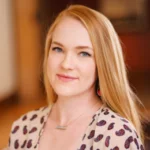Are your running shoes smothered in a blanket of cobwebs? Your bicycle hasn’t come down from its hook in the garage since the Reagan administration?
Hey, we hear you. Draw inspiration for your own incipient fitness program with these shipshape dentists, whose athletic exploits are exceeded only by their feats in the operatory. Now drop and give us twenty!
IT CAN BE DIFFICULT
for those not in the profession to understand what a physically demanding job dentistry is. Yet the old, white-haired, hunched-over tooth doc of the popular imagination has mostly been replaced by a cadre of young, fit practitioners determined to stay healthy as they age.
Still, being a weekend warrior is one thing; true commitment to the cause is quite another. The five doctors highlighted here are no dilettantes. They are, rather, serious athletes. Their stories will inspire you, whether you’re an athlete yourself or more a spectator of the couch-surfing variety. Good health starts with good teeth, but it’s built on activity. This quintet of dentists show how it’s done.
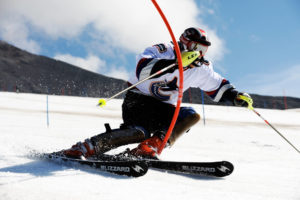 GO, SPEED RACER, GO
GO, SPEED RACER, GO
Dr. Michael Tichy
Salem, Oregon
“WE ARE A FAMILY of racers,” says Dr. Michael Tichy of his siblings and parents, and he means it: His father, a college athlete and ski instructor who escaped communist Czechoslovakia in 1980 and immigrated to western Canada, imbued the love of the sport in his children. Dr. Tichy’s older brother was a U.S. champion in 1997; his older sister raced for team Canada in the 1998 Olympics in Nagano, Japan; and Dr. Tichy won Canadian nationals in slalom in 2000.
That same year, Dr. Tichy, now 37, moved to Oregon from Vancouver, British Columbia, where he had grown up. He and his siblings had enjoyed a great deal of success. “We lived off our winnings for years,” he says. “Though ski racing’s not basketball or football—unless you’re Bode Miller or Lindsey Vonn, you’re living from sponsor to sponsor, and we were fully sponsored: They give you a little money. Mostly they give you free equipment.”
In 2006, Dr. Tichy decided to “semi-retire”: “I’d still go to races to get paid. It was decent income for the winter months. I’d do summer-ski race camps, three months of coaching.” But by 2009, he had entered school, and classes were taking precedence. “I decided to hang up the boots and devote myself to studying.
“I always thought I’d be a ski bum full-time,” he continues. “But both my parents were doctors in Czechoslovakia, and the older you get, the more you realize you get only one swing at this thing called life.” He mulled becoming a physical therapist or orthopedic surgeon but was tugged toward dentistry by some of the adults he taught in summer camps.
“A dentist’s life is way better than a medical doctor’s life, they told me,” Dr. Tichy says. “I was always very hands-on, too—I rebuilt motors, played with Legos ever since I was a little kid. Dentistry, all hand work, was a perfect fit.”
He graduated with his DMD from Oregon Health & Science University, and since June 2016 has worked in Salem for Dr. Gregory Dilger—whom he met two decades ago when Dr. Dilger signed up for one of his ski classes.
Dr. Tichy no longer races professionally—“once you get out, it’s hard to compete at a lower level and take it seriously,” he says—but his love for the sport has been renewed by his two young daughters. His family, too, still runs camps around the world through their company, Tichy Racing (tichyracing.com).
“The Boston Marathon was always this great thing to me, an unreachable goal,”
Dr. Katherine Vo says. “I admired the people who ran it. I finally determined that I wanted to do it too, and that I should.”
In his new line of work, does he ever see a patient coming in for a ski-related injury? “Not usually from wiping out,” he says, laughing. “But you can take a gate in the face. Dr. Dilger has seen many of our skiers. They break a tooth, and they come on down.”
RUNNER’S HIGH
Dr. Katherine Vo
San Francisco
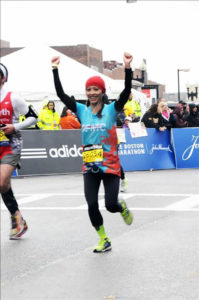 DR. KATHERINE VO never considered herself an athlete per se.
DR. KATHERINE VO never considered herself an athlete per se.
She was 14 when her family moved from Vietnam to the Bay Area, and for years she spent more time working on her studies—and learning English—than thinking about sports. She went on to earn her undergraduate degree in biology, microbiology and ethnic studies, and later her DDS, from the University of California, San Francisco. (She’s now an assistant clinical professor at UCSF’s dental school.)
Then she turned 30, and an influential acquaintance strongly urged her to pick up a hobby—something physical. “My doctor said I needed to do something active,” Dr. Vo says, laughing at the memory. “I might be skinny, but I can be skinny-fat.”
So she started running. Nothing too strenu-ous at first, but for Dr. Vo, a self-described adrenaline junkie, early-morning runs through San Francisco’s pitched streets quickly grew addictive. “Dentistry is a labor-intensive career—lots of leaning over, terrible posture—so it definitely helps with that,” she says. “It’s a way for me to recharge.”
In 2015, Dr. Vo qualified for the Boston Marathon—a triumph that went well beyond mere pride at simply achieving a certain time. Her husband hails from Boston, and it’s her favorite U.S. city. “The Boston Marathon was always this great thing to me, an unreachable goal,” she says. “I admired the people who ran it so much. I finally determined that I wanted to do it too, and that I should.”
Race day—two years after the marathon had been staggered by the bombing at the finish line—was rainy; a drenched Dr. Vo logged her 26.2 miles in four hours and six minutes. “It was an emotional run, to say the least,” she says. “I crossed the finish line completely soaked. It was a very proud moment.”
Although the more than 30 races she has run aren’t all as prestigious as that, almost every one has helped benefit a charity. (In Boston, she ran on behalf of the Dana-Farber Cancer Institute. “I try to combine my interests,” she says, chuckling.) Last April, she was a member of Amnesty International’s team running the London Marathon.
In the meantime, she trains the way she always has—or since age 30, at any rate: by lacing up her brightly colored Nike sneakers and hitting the fog-misted sidewalks of early-
morning San Francisco. “I’m not super-fast or anything,” she says. “I compete against myself: Every run I do, the next run I want to be a little faster. It’s a personal challenge.” Her physician is no doubt proud.
TRIPLE THREAT
Dr. Mark Broomhead
Munster, Indiana
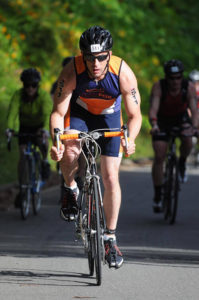 IMAGINE BEING PLUNGED into 55-degree water where sharks are known to lurk, and being forced to swim a mile and a half to safety. Think you’re off the hook when your goosebump-pocked body reaches land? No. An 18-mile bike ride and eight-mile run through San Francisco’s Pythagorean hills lie ahead. Start to end, this murderous journey lasts hours—provided you make it to the finish line. Behold the Alcatraz Triathlon.
IMAGINE BEING PLUNGED into 55-degree water where sharks are known to lurk, and being forced to swim a mile and a half to safety. Think you’re off the hook when your goosebump-pocked body reaches land? No. An 18-mile bike ride and eight-mile run through San Francisco’s Pythagorean hills lie ahead. Start to end, this murderous journey lasts hours—provided you make it to the finish line. Behold the Alcatraz Triathlon.
“My buddies would send me videos of a Great White attack at Alcatraz for weeks leading up to the race,” says Dr. Mark Broomhead, who completed the grueling triathlon in 2016. “I was dressed just like a seal—in a wetsuit, you know—so imagine 44 minutes of freezing water, not knowing what’s underneath me or how many teeth are ready to grab me. Hopefully not as many teeth as I see in the dental office.”
It of course takes time to build up to a “tri” as rigorous as Alcatraz. Dr. Broomhead, a Chicago-area native, dived headfirst (as it were) into competing in the challenging races at age 32, running alongside and swimming in Lake Michigan. One day, on a whim, he signed up for the Chicago Triathlon. “The first one I didn’t put that much into,” he says. “It was random.” But he was hooked, following that first tri with six more. Alcatraz, the most recent, was the apex. “Everybody says I’m crazy, but it was very, very fun and rewarding.”
Dr. Broomhead has since traded urban life in the Windy City for a quieter one just across the state line in Indiana, where he co-owns Compton and Broomhead Dental Center and lives with his wife and young daughter. Fitness remains a priority. “I run in the suburbs now,” he says. “I live on a golf-course subdivision, so it’s different. But it’s very hilly, so it’s still a challenge.” He also makes sure to hit his home gym every morning, and occasionally heads back to the running trail around Lake Michigan in Chicago on weekends.
He’s not actively training for any race at the moment, but competing in at least one more notorious triathlon is very much in his plans. “I’d still like to do Ironman in Kona,” he says, referring to the bruising Hawaiian competition that’s four times the distance of an Olympic triathlon. “It’s on my bucket list, and I haven’t checked it off yet.”
GOAL-ORIENTED
Dr. Nuri Eraydin
Maple Glen, Pennsylvania
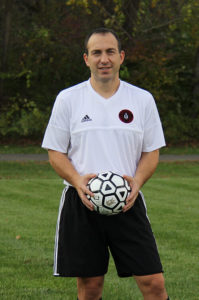 DR. NURI ERAYDIN spends all day working with his hands, so it’s only fitting that at night, he works hard with his feet as an avid soccer player. “Some people like to go for a run,” he says. “I like to be competitive.”
DR. NURI ERAYDIN spends all day working with his hands, so it’s only fitting that at night, he works hard with his feet as an avid soccer player. “Some people like to go for a run,” he says. “I like to be competitive.”
The Philadelphia-area general dentist, a native of Turkey, played the sport in high school, and again alongside his fellow dental students at Temple University. It’s not too big a stretch to say that Dr. Eraydin, who plays three to four times a week, is a full-time dentist and part-time soccer stud.
In 2017, for his fortieth birthday, his wife surprised him with a trip to Scotland to take in a proper “football” game. He was astounded by the quality of the play: “I hate to say it, but nothing in America is the same caliber as the games there.”
Dr. Eraydin’s patients praise him for his gentle chairside manner—which likely raises the eyebrows of those less-fortunate souls who encounter him on the pitch. “When people see me on the field, they can’t imagine that I’m a dentist, the way I play and how I look,” he says. “I’m a very physical player; I don’t back down from tackles.” Nor does fear of getting hurt keep him from digging in. “I’ve gotten multiple injuries: stitches on my brow twice, busted lips, but I’ve never broken anything—knock on wood.”
The toughness required to play highly competitive soccer is, indeed, part of its appeal. “A lot of professionals don’t play competitive sports because they’re wor-ried about injuries,” he says. “I look at it as stress relief.”
During the bitter Philly winters, Dr. Eraydin signs up for a handful of indoor leagues; the rest of the year you can find him scrambling around outside. In all, he plays in some nine different leagues every year. The competitiveness, camaraderie and physical release are the trifecta that keep him committed to making time for soccer—even if that means an 11 p.m. start time the night before his alarm is set for 5:45 in the morning. “I actually feel more energetic the day after a nighttime game,” he says with a shrug. “It keeps me in shape. It keeps me focused.”
SURVIVAL OF THE FITTEST
Dr. Natalie Pennington
Delray Beach, Florida
 “THE GYM,” SAYS Dr. Natalie Pennington, “has always been a second home to me.”
“THE GYM,” SAYS Dr. Natalie Pennington, “has always been a second home to me.”
The King County, Washington, native grew up in a strict household that put a premium on good physical health; her parents drove her to the gym often. In high school, she spent two years as a cheerleader, and worked periodically with a modeling agency that pressured her to lose weight. During a job she got at a local health club at age 17, however, she encountered strong, fit, healthy women all day long, and her role models—and her aspirations—began to change.
As a student at the University of Washington in Seattle, Dr. Pennington continued weight training while she lived at home to save money. “I wasn’t your typical col-
lege girl,” she says. “The gym was my only outlet to be social.” After terminating an unhealthy relationship, she got increasingly serious about taking care of herself both inside and out. While her fellow students were boozing, overeating or worse, Dr. Pennington continued to hit the gym and refine her nutrition. By the time she was 30 and a practicing dentist, she mustered up the courage to participate in a fitness competition. She took first place.
More than a half-dozen years later, Dr. Pennington has been a contestant in many such competitions, notably the bikini division of the International Federation of Bodybuilding. She favors the IFBB Professional League, she says, because it promotes a “healthier, more mainstream look” over the bulked-up, artificial appearance favored by many bodybuilding organizations.
Looking like Dr. Hulk isn’t her goal, but Dr. Pennington’s fitness-forward lifestyle does demand meal plan-ning and intense workouts in equal measure. She preps food twice a week, on Sunday and Wednesday, to keep pace with eating six meals every day. Her time at Designer Family Dental is packed, so she often has to chow down between appointments. “They’re smaller meals, so it doesn’t take too long,” she says. “It works for me.”
She works out twice a day, six days a week. She wakes up at 4 a.m. for her first one, a cardio program. In the evening, she focuses on strength training. It’s a demanding schedule, but as she points out, the regimen she follows bolsters her health, fitness and overall happiness: “People see that I come to work with a happy mindset, and I think that’s
a positive influence on others.”
JERILYN FORSYTHE is a journalist based in Denver. She writes regularly for Incisal Edge.



